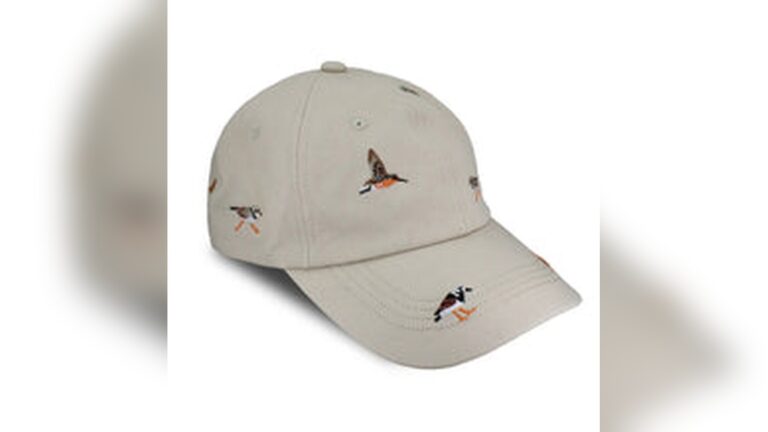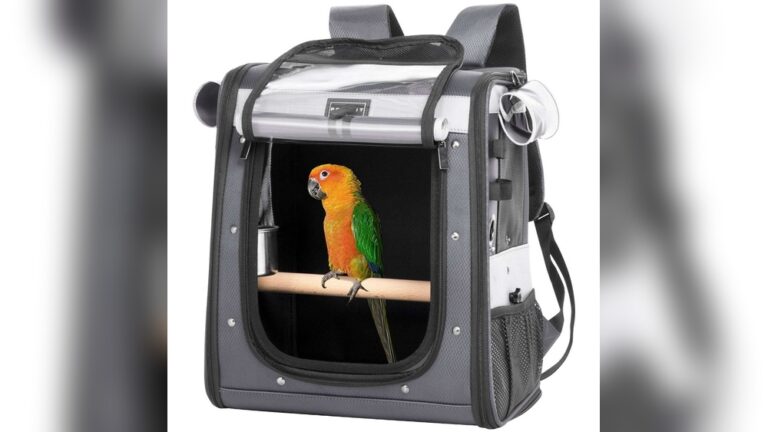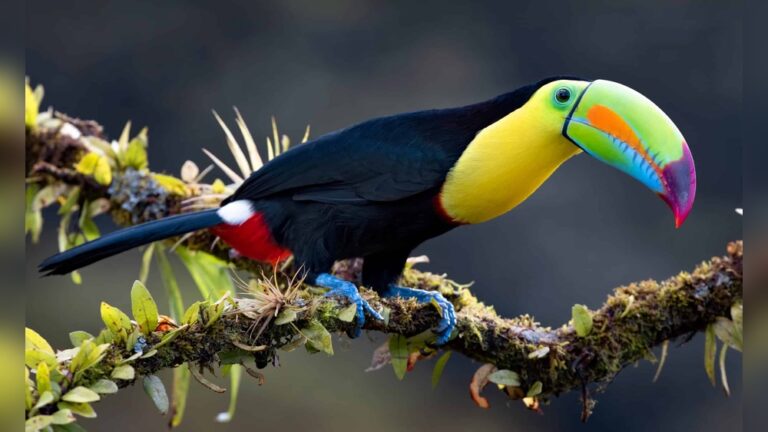Identifying Birds By Chest Color
Have you ever spotted a bird and wondered what it was, just by looking at its chest color? Your eyes can reveal secrets that help you identify different bird species quickly and easily.
By focusing on the colors and patterns on a bird’s chest, you can become a sharper observer and enjoy your time outdoors even more. Ready to unlock this simple yet powerful skill? Keep reading, and you’ll discover how chest colors can guide you to name the birds you see every day.
Chest Color As A Key Identifier
Chest color stands out as a simple way to identify many bird species. It varies widely across birds and often signals different types clearly. Observing chest color helps bird watchers and beginners spot and name birds quickly. This feature can be a reliable clue when birds have similar shapes or sizes.
Birds use chest colors for many reasons, including attracting mates and camouflage. These colors can range from bright reds and oranges to dull browns and grays. Some species have distinct chest patches or stripes that make them easy to remember. Understanding these colors gives insight into bird behavior and habitat.
Bright Chest Colors And Their Meaning
Bright chest colors often indicate male birds. They use these colors to attract females during mating season. Colors like red, orange, and yellow are common in many songbirds. These vivid hues help birds stand out in green forests or open fields. Bright chests also warn predators about the bird’s strength or toxicity.
Patterns And Markings On The Chest
Chest patterns help distinguish similar-looking birds. Stripes, spots, or patches create unique designs. For example, a spotted chest might belong to thrushes or woodpeckers. Striped chests often appear in warblers or sparrows. Learning these patterns makes bird identification easier and faster.
Chest Color Changes With Seasons
Some birds change chest color depending on the season. Breeding seasons bring out brighter colors to attract mates. Outside breeding times, colors may fade or become duller. These changes help birds blend into their environment. Noticing seasonal shifts helps identify birds correctly year-round.

Credit: www.birdwatchingdaily.com
Common Chest Colors In Birds
Birds show a wide range of chest colors. These colors help in identifying different bird species. Observing the chest color offers clues about the bird’s identity. It is a simple way to tell birds apart. Each color group includes many bird types. This section explores common chest colors in birds.
Red And Rust Tones
Red and rust tones often stand out on birds. Birds with these colors can look bright or subtle. The American Robin has a rich red chest. Rusty colors sometimes appear as a mix of red and brown. These colors suggest warmth and are easy to spot.
Yellow And Gold Shades
Yellow and gold chest colors shine in sunlight. Birds like the Yellow Warbler wear bright yellow chests. Gold shades may look soft or glowing. These colors attract attention and signal energy. They often blend well with green surroundings.
Blue And Green Hues
Blue and green chest colors are less common but striking. Some birds show a soft blue chest, like the Bluebird. Green shades might mix with other colors. These hues give a cool and calm look. They help birds blend into leafy areas.
White And Cream Colors
White and cream chest colors appear clean and bright. Birds such as the Snowy Egret have white chests. Cream tones add a gentle touch to the bird’s look. These colors often signal purity and simplicity. They stand out against darker feathers.
Black And Dark Browns
Black and dark brown chests offer a strong contrast. Birds like the Common Grackle show shiny black chests. Dark brown can look warm and earthy. These colors help birds hide in shadows. They also give a bold, solid appearance.
Bird Species By Chest Color
Birds show many colors on their chests. Chest color helps identify different bird species easily. This guide highlights common birds by their chest colors. Spotting these colors can make bird watching more fun and simple.
Birds With Red Chests
Red chests stand out in many bird species. The American Robin is famous for its bright red chest. Another example is the European Robin, smaller but equally red. These birds use their red chest to attract mates and mark territory.
Birds With Yellow Chests
Yellow chests brighten forest and garden scenes. The Yellow Warbler displays a vivid yellow chest. The Hooded Warbler also shows a striking yellow front. Yellow chest birds often live in wooded areas or near water.
Birds With Blue Chests
Blue chest birds are rare but beautiful. The Eastern Bluebird is well known for its deep blue chest. The Blue Grosbeak shows a darker blue chest with a robust body. These birds bring a splash of color to open fields and woodlands.
Birds With White Chests
White chests can appear plain but are easy to spot. The White-breasted Nuthatch shows a clean white chest. The Snow Bunting is another bird with a striking white front. These birds often blend into snowy or bright environments.
Birds With Black Chests
Black chests give birds a bold, dramatic look. The Common Grackle has a shiny black chest. The Black-capped Chickadee features a smaller black patch on its chest. These birds use their chest color to communicate and impress.

Credit: www.allaboutbirds.org
Seasonal And Gender Variations
Birds often change their chest colors based on seasons and gender. These changes help with mating and survival. Knowing these variations makes bird identification easier and more accurate. Observe these differences carefully during your birdwatching.
Breeding Vs Non-breeding Plumage
Many birds show brighter chest colors during breeding season. The colors become duller outside this time. Bright colors attract mates and signal health. Non-breeding plumage helps birds stay hidden from predators. Notice the changes in chest color throughout the year for better ID.
Male And Female Differences
Male birds usually have more vibrant chest colors. Females tend to have softer, duller tones. This helps females stay camouflaged while nesting. Some species show almost no chest color difference. Pay attention to size and patterns along with color for correct gender ID.
Tips For Accurate Bird Identification
Identifying birds by their chest color can be very helpful. Yet, relying on chest color alone can cause mistakes. Many birds share similar chest colors, so using extra tips makes identification more accurate. These tips help bird watchers avoid confusion and enjoy the experience more.
Here are practical ways to improve your bird identification skills using chest color and other helpful methods.
Using Chest Color With Other Features
Look at the bird’s size and shape along with the chest color. Notice the beak shape, wing patterns, and tail length. Check the color on the head and back too. Combining all these features gives a clear idea of the bird’s identity. Don’t rely on chest color alone; it’s just one clue.
Lighting And Viewing Conditions
Light changes how colors appear on a bird’s chest. Bright sunlight shows true colors best. Early morning or late afternoon light can change the chest color’s look. Shadows can hide details or make colors look dull. Try to see the bird from different angles to get a better view.
Photographing For Later Analysis
Take clear photos if you can. Photos help you check details later. Use zoom to avoid scaring the bird away. Try to capture the chest and other key features. A good photo makes it easier to compare with bird guides or apps after your sighting.

Credit: avianreport.com
How Smart Pets Lover Can Help You with Identifying Birds By Chest Color
Practical Ways to Enhance Your Bird Identification Skills
Understanding chest color as a key identifier opens up exciting opportunities for hands-on learning. To truly connect with the birds you observe, try combining this knowledge with tips for accurate bird identification, such as noting seasonal and gender variations that can affect a bird’s chest hues. For example, some species display brighter or different chest colors during mating seasons, which adds an extra layer of observation to your birdwatching experience.
Engaging with local birdwatching groups or setting up a simple backyard bird feeder can provide real-life practice in spotting these subtle color differences. Journaling your sightings and cross-referencing them with species known for distinct chest colors can deepen your understanding over time. At Smart Pets Lover, we believe that every little detail you notice helps build a stronger bond with nature’s feathered friends—because where every wag, purr, and chirp tells a story, every splash of color adds to that tale.
If you’re looking for more guidance or have specific questions, don’t hesitate to reach out to birding communities or educational resources in your area. Learning is a joyful journey, and sharing observations can make it even more rewarding.
Frequently Asked Questions
What Are Common Chest Colors In Bird Identification?
Common chest colors include red, yellow, blue, brown, and white. These colors help quickly narrow down bird species during observation.
How Does Chest Color Aid Bird Species Recognition?
Chest color provides a visual clue to distinguish similar birds. It complements size, shape, and behavior for accurate identification.
Can Chest Color Change With Bird Age Or Season?
Yes, some birds’ chest colors change due to molting or maturity. Seasonal variations can affect plumage brightness and pattern.
Which Bird Families Have Distinctive Chest Colors?
Warblers, thrushes, and tanagers often display vivid chest colors. This trait helps birdwatchers identify them in diverse habitats.
Conclusion
Bird chest colors help spot different bird types quickly. Notice their shades and patterns carefully. Practice by watching birds in parks or gardens. Over time, identifying birds by chest color feels natural. Each bird’s chest tells a small story. Keep a bird guide handy to compare colors.
Enjoy the simple joy of bird watching every day. This skill makes nature walks more fun and interesting. Try to learn a few birds at a time. Soon, bird names and colors will stick in your mind.







